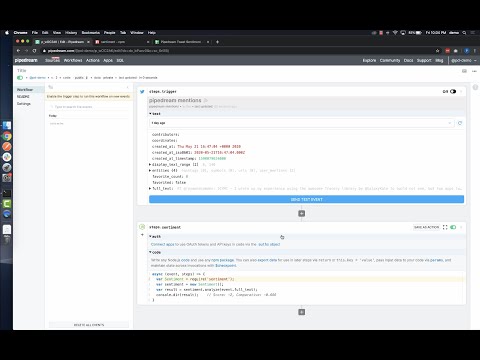What do you want to automate
with Google Sheets and Crowdin?
Prompt, edit and deploy AI agents that connect to Google Sheets, Crowdin and 3,000+ other apps in seconds.
Trusted by 1,000,000+ developers from startups to Fortune 500 companies
Popular Ways to Connect Google Sheets with Crowdin#
Popular Google Sheets and Crowdin Triggers#
Emit new event when a user adds a comment or an issue in Crowdin.
Emit new event when a file is fully translated and approved.
Emit new event each time a comment is added to a spreadsheet.
Popular Google Sheets and Crowdin Actions#
Add a single row of data to Google Sheets. See the documentation
Add multiple rows of data to a Google Sheet. See the documentation
Get all values or values from a range of cells using A1 notation. See the documentation
Overview of Google Sheets#
The Google Sheets API allows for the creation, reading, updating, and deletion of data within Google Sheets, enabling a robust platform for spreadsheet management and data manipulation. Through Pipedream, you can craft serverless workflows that respond to various triggers, such as webhook events, emails, or scheduled times, to interact with Google Sheets. This synergy can automate reporting, synchronize data across applications, manage inventory, track leads in a CRM, or even conduct survey analysis by updating and retrieving sheet data on the fly.
Connect Google Sheets#
import { axios } from "@pipedream/platform"
export default defineComponent({
props: {
google_sheets: {
type: "app",
app: "google_sheets",
}
},
async run({steps, $}) {
return await axios($, {
url: `https://www.googleapis.com/oauth2/v1/userinfo`,
headers: {
Authorization: `Bearer ${this.google_sheets.$auth.oauth_access_token}`,
},
})
},
})
Overview of Crowdin#
The Crowdin API offers a way to streamline localization processes by enabling automated interactions with Crowdin projects. With this API on Pipedream, you can create workflows that manage translations, coordinate with translators, and sync localized content across your apps. It becomes easy to upload new source files, download translations, manage projects, and crowdsource translations, all within the Pipedream ecosystem.
Connect Crowdin#
import { axios } from "@pipedream/platform"
export default defineComponent({
props: {
crowdin: {
type: "app",
app: "crowdin",
}
},
async run({steps, $}) {
return await axios($, {
// If you are using Crowdin Enterprise, your API URL
// should be https://{your_org_domain}.api.crowdin.com/
url: `https://api.crowdin.com/api/v2/user`,
headers: {
Authorization: `Bearer ${this.crowdin.$auth.oauth_access_token}`,
},
})
},
})
Related Videos#



Community Posts#


